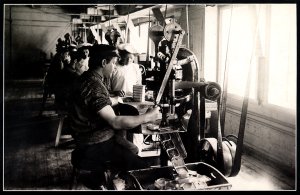Canning
|
|
Canning is a method of preserving food by first heating it to a temperature that destroys contaminating micro-organisms, and then sealing it in air-tight jars or cans. Because of the danger of botulism, the only safe method of canning most foods is under conditions of both high heat and pressure, normally at temperatures of 240-250°F (116-121°C). Foods that must be pressure canned include all vegetables, meats, seafood, poultry, and dairy products. The only foods that may be safely canned in a boiling water bath (without high pressure) are highly acidic foods like fruits, pickled vegetables, or other foods to which acid has been added.
According to reseachers, canned tomatoes contain higher quantities of lycopene, an essential phytochemical, than fresh tomatoes.
| Contents |
History
During the early Revolutionary Wars, the notable French newspaper Monde, prompted by the government, offered a hefty cash award of 12,000 Francs to any inventor who could come up with a cheap and effective method of preserving large amounts of food. The massive armies of the period required regular supplies of quality food, and so preservation became a necessity. In 1809, the French confectioner Nicholas Appert developed a method of vacuum-sealing food inside glass jars. However, glass containers were unsuitable for transportation, and soon they had been replaced with cylindrical tin or steel cans (tin-openers were not to be invented for another thirty years - at first, soldiers either had to cut the cans open with bayonets or smash them open with rocks to get the food out!). The French Army began experimenting with issuing tinned foods to its soldiers, but the slow process of tinning foods and the even slower development stage, along with the difficulties of loading wooden wagons with tons of metal canisters, prevented the army from shipping large amounts around the Empire, and the war ended before the process could be perfected. Unfortunately for Appert, the factory which he had built with his prize money was burned down in 1814 by Allied soldiers invading France. Following the end of the Napoleonic Wars, the process was gradually put into practice in other European countries and in the United States. Based on Appert's methods of food preservation the packaging of food in sealed airtight tin-plated wrought-iron cans was first patented by an Englishman, Peter Durand, in 1810. Initially, the canning process was slow and labour-intensive, making the tinned food too expensive for ordinary people to buy. Only the rich could afford it, and rich people generally preferred fresh food to tinned alternatives. However, increasing mechanisation of the process, coupled with a huge increase in urban populations across Europe, resulted in a rising demand for tinned food.
A number of inventions and improvements followed, and by the 1860's, the time to process food in a can reduced from six hours to 30 minutes. Thomas Kensett established the first U.S. canning facility for oysters, meats, fruits and vegetables in New York in 1812 and also patented an improved tin canister method. Urban populations in Victorian era Britain demanded ever-increasing quantities of cheap, varied, good-quality food that they could keep on the shelves at home without having to go to the shops every day for fresh produce. In response, companies such as Nestle, Heinz, and others appeared to provide shops with good-quality tinned food for sale to ordinary working-class city-dwellers. Demand for tinned food skyrocketed during the First World War, as military commanders searched for cheap, high-calorie food which could be transported safely, would survive trench conditions, and which would not spoil in between the factory and the front lines. Complete meals in a tin appeared in 1916, but throughout the war soldiers generally subsisted on very low-quality tinned foodstuffs, such as the British "Bully Beef" (cheap corned beef) and the notoriously disgusting "Pork and Beans" produced by the MacConnaughy Corporation. The tinned food issued to French soldiers was by far the worst in any army, whilst shortages of tinned food in the British Army in 1917 led to the government issuing soldiers with cigarettes and even amphetamines to surpress their appetites. After the war, companies that had supplied tinned food to national militaries improved the quality of their goods for sale on the civilian market. Canned foods were soon commonplace, and today tin-coated steel is the material most commonly used. Some food firms are currently dabbling with self-heating cans.
Canning companies
- Hirzel Canning Company & Farms
- Contadina Foods, Inc
- BOBOLI Pty. Ltd
- Ball Corporation
- Crown Holdings Inc
- Silgan Containers Corporation
Canning organizations
External link
- National Center for Home Food Preservation - How do I...Can (http://www.uga.edu/nchfp/how/can_home.html)
- Recent development in canning industry (http://www.washingtonpost.com/ac2/wp-dyn/A37489-2004Oct16?language=printer)
- How to can fresh produce. (http://www.preservefood.com/canning.shtml)
- The history of the Norwegian Canning Industry (http://www.stavanger.museum.no/Eng/Hermetikk/hermhist.htm)fr:Conserve

